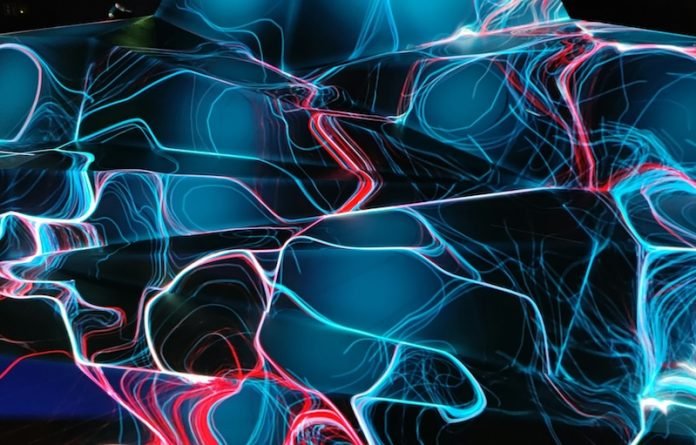
At Colorado State University, a new method to detect and understand one of the universe’s most elusive components—dark matter—has been developed.
This innovative approach, set to be utilized in the colossal detectors of the forthcoming Deep Underground Neutrino Experiment (DUNE), comes from the collaborative efforts of Assistant Professor Joshua Berger and a colleague from the University of Texas at Austin.
Their research, detailed in a recent publication in Physics Review Letters, suggests a novel way to identify the interactions of a specific class of particles with atomic nuclei, particularly focusing on the significant energy unleashed when dark matter collides with a proton, causing its destruction.
This pivotal discovery could potentially be observed using the advanced and highly sensitive detectors of DUNE, slated to commence operations in 2028.
The successful identification of such interactions could revolutionize our understanding of dark matter, a mysterious substance believed to constitute the majority of the universe’s mass and energy.
Despite its pervasive influence, especially evident in the gravitational forces shaping galaxies, dark matter remains invisible to current observational technologies due to its non-interactive nature with light or any known particles.
Berger expresses optimism that DUNE’s detectors will capture evidence of dark matter through the phenomena his theory anticipates.
He highlights the significance of understanding dark matter in comprehending the fundamental constituents of the universe, contrasting the observable matter that forms our tangible world with the unseen majority.
The ambition of the DUNE project extends beyond dark matter, aiming to address several profound cosmic mysteries.
Operated by the Department of Energy’s Fermilab, DUNE’s primary mission involves exploring neutrinos—ubiquitous particles that may hold the key to unlocking the unification of fundamental forces, a long-standing puzzle in physics.
By tracking neutrinos transmitted from Illinois to a deep underground facility in South Dakota, DUNE seeks to provide insights into neutrino properties, the dynamics of exploding stars, and the processes governing star and black hole formation.
With over 1,400 scientists and engineers from more than 200 institutions across 36 countries, the DUNE collaboration stands as a monumental international effort in the field of particle physics.
The project has already initiated the mass production of its components and is in the testing phase of the technologies that will empower its detectors.
This ambitious endeavor not only aims to shed light on dark matter and neutrinos but also aspires to further our understanding of the universe’s fundamental principles.
As the project progresses towards its operational phase, the scientific community watches with anticipation, hopeful for breakthrough discoveries that could redefine our grasp of the cosmos.
The research findings can be found in Physical Review Letters.
Copyright © 2024 Knowridge Science Report. All rights reserved.



